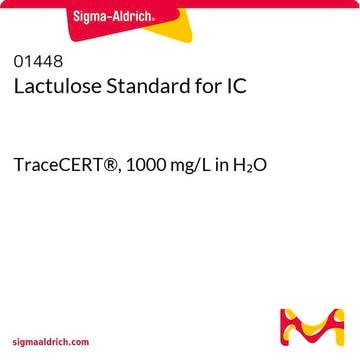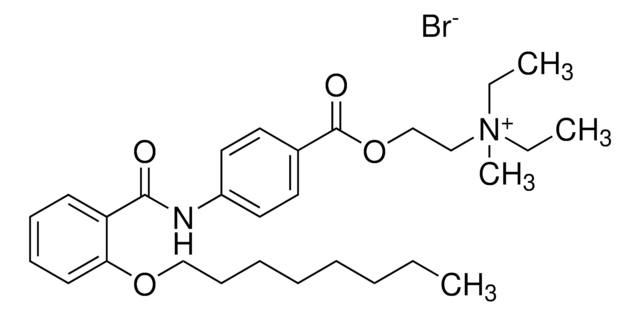08561
(S)-(−)-α -Lipoic acid
≥97% (HPLC)
Synonym(s):
(S)-1,2-Dithiolane-3-pentanoic acid, (S)-6,8-Thioctic acid
Sign Into View Organizational & Contract Pricing
All Photos(1)
About This Item
Empirical Formula (Hill Notation):
C8H14O2S2
CAS Number:
Molecular Weight:
206.33
Beilstein/REAXYS Number:
81852
MDL number:
UNSPSC Code:
12352106
PubChem Substance ID:
NACRES:
NA.25
Recommended Products
assay
≥97% (HPLC)
optical purity
enantiomeric excess: ≥98.0% (HPLC)
storage temp.
−20°C
SMILES string
OC(=O)CCCC[C@H]1CCSS1
InChI
1S/C8H14O2S2/c9-8(10)4-2-1-3-7-5-6-11-12-7/h7H,1-6H2,(H,9,10)/t7-/m0/s1
InChI key
AGBQKNBQESQNJD-ZETCQYMHSA-N
Biochem/physiol Actions
Biological antioxidant with prooxidant activities . Method for enantioseparation of lipoic acid in dietary supplements by capillary electrophoresis.
Packaging
Bottomless glass bottle. Contents are inside inserted fused cone.
Certificates of Analysis (COA)
Search for Certificates of Analysis (COA) by entering the products Lot/Batch Number. Lot and Batch Numbers can be found on a product’s label following the words ‘Lot’ or ‘Batch’.
Already Own This Product?
Find documentation for the products that you have recently purchased in the Document Library.
Customers Also Viewed
Shuji Kodama et al.
Electrophoresis, 33(15), 2441-2445 (2012-08-14)
Lipoic acid, an antioxidant, naturally occurs as the (R)-enantiomer, while synthetic lipoic acid is racemic. It is thus of interest to know the (R)-enantiomer content of lipoic acid supplements. Here, we used capillary electrophoresis to directly enantioseparate lipoic acid in
Ronald Bentley
Chemical Society reviews, 34(7), 609-624 (2005-06-21)
Chiral structures profoundly influence chemical and biological processes. While chiral carbon biomolecules have received much attention, chirality is also possible in certain sulfur compounds; just as with carbon, there can be differences in the physiological behavior of chiral sulfur compounds.
L Packer et al.
Free radical biology & medicine, 19(2), 227-250 (1995-08-01)
alpha-Lipoic acid, which plays an essential role in mitochondrial dehydrogenase reactions, has recently gained considerable attention as an antioxidant. Lipoate, or its reduced form, dihydrolipoate, reacts with reactive oxygen species such as superoxide radicals, hydroxyl radicals, hypochlorous acid, peroxyl radicals
Hadi Moini et al.
Toxicology and applied pharmacology, 182(1), 84-90 (2002-07-20)
Reactive oxygen (ROS) and nitrogen oxide (RNOS) species are produced as by-products of oxidative metabolism. A major function for ROS and RNOS is immunological host defense. Recent evidence indicate that ROS and RNOS may also function as signaling molecules. However
Our team of scientists has experience in all areas of research including Life Science, Material Science, Chemical Synthesis, Chromatography, Analytical and many others.
Contact Technical Service







